A car engine converts fuel into mechanical power using internal combustion processes.
Introduction
Engines are the beating heart of cars, the machinery that propels them forward and gives life to the inanimate frames. In this section, we will delve into what an engine is and take a brief journey back to its origins.
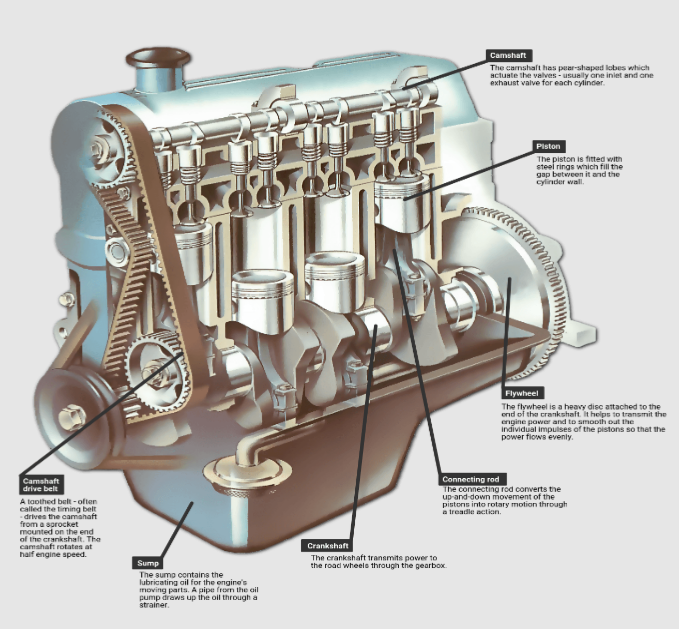
Brief Overview of a Car Engine
The car engine, often referred to as the internal combustion engine, is a complex assembly of parts that convert fuel into mechanical energy. This energy is what drives the wheels of the car and allows us to travel. At its core, the process involves igniting fuel in a confined space and using the resulting explosion to move a piston. This piston movement is then converted into rotational motion, which turns the car’s wheels.
To give you some specifics:
- Power: Modern car engines can produce power ranging from 100 horsepower (HP) in smaller cars to well over 600 HP in high-performance sports cars.
- Size: Engines come in various sizes, with many small cars having a 1.0-liter to 1.5-liter engine capacity, while larger SUVs and trucks can have engines as big as 6.0 liters or even more.
- Efficiency: The efficiency of car engines can vary, but on average, current gasoline engines have an efficiency rate of about 20% to 30%. This means that only about a quarter of the energy in the fuel is converted into useful work, with the rest being lost to heat and other factors.
- Cost: The cost to manufacture an engine can range from $2,500 for smaller, simpler engines to over $10,000 for large, high-performance engines. This doesn’t include the costs associated with research, development, and testing.
- Materials: Engines are predominantly made from cast iron or aluminum, with various other metals used for different parts like titanium for some valves or forged steel for crankshafts.
History of the Combustion Engine
The idea of harnessing the power of ignited fuel dates back centuries, but the real breakthrough came in the late 19th century. Nikolaus Otto is credited with developing the first true four-stroke internal combustion engine in 1876.
As for the evolution of the engine:
- Age: The first commercial gasoline engine was built over 140 years ago.
- Development Time: The transition from the rudimentary engines of the late 1800s to the sophisticated machines of today took over a century of development.
- Value: The historical value of the combustion engine cannot be understated. It not only revolutionized transportation but also played a pivotal role in shaping the modern world.
- Materials: In the early days, engines were made mostly of cast iron. With advancements in technology, materials like aluminum started to become more popular due to their weight advantages.
- Efficiency: Early engines had an efficiency rate of only about 10%, but this has gradually improved over time thanks to technological advancements.
In the next sections, we’ll delve deeper into the components and workings of the engine, revealing its intricacies and marvels.
Basic Components of a Car Engine
The car engine is an intricate machine, with each component playing a crucial role in the overall function of converting fuel into power. Each of these parts has its unique function, characteristics, and importance. Let’s dive into the basic components and explore their functions and features.
The Block
Often termed as the engine block or simply the block, this is the foundational structure of the engine. It’s essentially the skeleton of the engine where other parts are attached or set in. Made predominantly from aluminum or cast iron, the block houses the cylinders and other components.
- Material: Traditionally, engine blocks were made of cast iron due to its strength. However, with the aim to reduce weight, many modern engines use aluminum, which is lighter.
- Cost: Depending on the size, material, and complexity, an engine block can cost anywhere from $500 to $5,000.
- Specifications: Engine blocks are specified by the number of cylinders they contain, such as V6 (6 cylinders arranged in a V shape) or inline-4 (four cylinders arranged in a line).
Pistons
Pistons are cylindrical components that move up and down within the cylinders of the engine block. When fuel ignites, it pushes the piston down, which in turn moves the crankshaft.
- Material: Typically made of aluminum alloys for a balance of strength and weight.
- Size: The diameter of a piston, known as its bore, can range from 70mm in small engines to over 100mm in larger ones.
- Speed: At high speeds, some engine pistons can move up and down over 100 times per second!

Cylinder Head
Positioned on top of the engine block, the cylinder head contains critical components like the valves, spark plugs, and fuel injectors.
- Material: Like the engine block, cylinder heads can be made of cast iron or aluminum.
- Value: Cylinder heads play a crucial role in sealing the combustion chamber and ensuring maximum compression and power extraction.
Valves
Valves control the flow of air and fuel into the combustion chamber and allow exhaust gases to escape. Typically, engines have an intake valve for air and fuel and an exhaust valve for burnt gases.
- Speed: In high-revving engines, valves might open and close over 2500 times a minute!
- Material: Usually made from a combination of materials, including steel, to withstand high temperatures and pressures.
Crankshaft
The crankshaft is the component that converts the up-and-down motion of the pistons into rotational motion, driving the car’s wheels.
- Specifications: Made of steel, crankshafts are designed to be robust and can vary in size depending on the engine type.
- Cost: A high-quality crankshaft can range in price from $200 for basic versions to over $2,000 for high-performance variants.
Camshaft
The camshaft is responsible for controlling the opening and closing of the engine valves. It’s synchronized with the crankshaft to ensure valves operate at the right time.
- Speed: The speed of the camshaft is typically half that of the crankshaft.
- Material: Often made of cast iron or steel, depending on the engine’s requirements.
Timing Belt/Chain
The timing belt or chain keeps the crankshaft and camshaft synchronized, ensuring valves open and close at the correct times.
- Lifespan: Timing belts usually need replacement between 60,000 and 100,000 miles, while chains can last longer, often over 200,000 miles.
- Cost: A timing belt replacement, including labor, can range from $300 to $500, whereas chains might be slightly more expensive.
By understanding these components and their functions, one can truly appreciate the marvel of engineering that is the internal combustion engine.
The Four-Stroke Combustion Cycle
One of the foundational principles behind the workings of the modern internal combustion engine is the four-stroke combustion cycle. This cycle, perfected over decades, outlines the sequential process by which fuel is transformed into power. Each stroke in the cycle plays a pivotal role, ensuring maximum energy extraction from the fuel. Let’s dissect each stroke and uncover the magic behind every turn of the engine.
Intake Stroke
During the intake stroke, the engine’s intake valve opens, allowing a mixture of air and fuel to enter the combustion chamber. This is facilitated by the downward movement of the piston, creating a vacuum that sucks in the air-fuel mixture.
- Timing: This happens precisely when the piston is at the top of the cylinder and starts its downward journey.
- Volume: For a 2.0-liter, 4-cylinder engine, approximately 500cc (0.5 liters) of air and fuel is taken in with every two full rotations of the crankshaft.
- Speed: The speed of the intake process varies but in high-performance engines can occur in milliseconds.
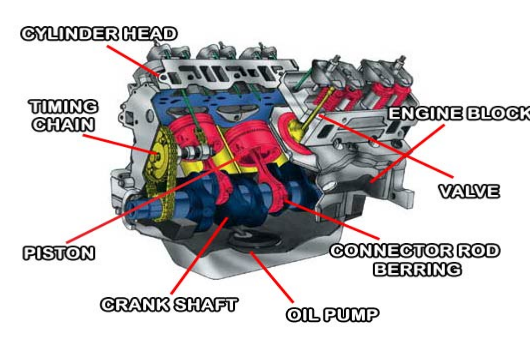
Compression Stroke
Post intake, the piston begins its upward movement, compressing the air-fuel mixture in the process. By compressing the mixture, the potential energy of the fuel is maximized, readying it for ignition.
- Efficiency: A high compression ratio can lead to greater engine efficiency. Most modern gasoline engines have a compression ratio ranging from 8:1 to 12:1, with some going even higher.
- Pressure: By the end of this stroke, pressures can reach upwards of 30 bar (or 30 times atmospheric pressure) in certain engines.
Combustion (Power) Stroke
Here’s where the magic happens. As the piston nears the top of its upward movement, the spark plug ignites the compressed air-fuel mixture. The explosion forces the piston downward, producing the power that turns the crankshaft.
- Power: The force exerted during this stroke is immense. For instance, in a 300 horsepower engine, each combustion event can produce over 75 horsepower (given a four-cylinder engine).
- Temperature: Combustion temperatures can soar up to 2,500°F (1,370°C) in certain conditions.
Exhaust Stroke
After extracting energy from the fuel, it’s time to expel the burnt gases. The exhaust valve opens as the piston moves upward, pushing out the exhaust gases from the combustion chamber.
- Efficiency: Efficiently expelling these gases ensures the engine is ready for a fresh charge of air and fuel. Advanced exhaust systems even recover some of the energy from these gases to improve overall engine efficiency.
- Quality: Modern engines incorporate catalytic converters to reduce harmful emissions, ensuring that over 98% of harmful pollutants are neutralized before they exit the tailpipe.
The four-stroke combustion cycle is a symphony of precision-engineered movements and reactions, ensuring our vehicles move forward with every turn of the key.
Fuel Systems
Fuel systems play an instrumental role in the operation of internal combustion engines. They determine how fuel gets to the engine and in what manner it is delivered, directly impacting performance, efficiency, and emissions. Let’s dive into the core components and understand the nuances of various fuel delivery mechanisms.
Carburetors vs. Fuel Injection
Historically, engines used carburetors to mix air with fuel. However, modern engines mostly employ fuel injection for its superior precision and efficiency.
- Carburetors:
- Function: A carburetor mixes air and fuel in a specific ratio and delivers it to the engine for combustion.
- Cost: Typically less expensive, with prices ranging from $100 to $500 for most vehicles.
- Efficiency: Carburetors might not be as efficient as fuel injection systems, often leading to a richer (more fuel) mix than necessary. This can reduce fuel efficiency by up to 15% compared to fuel injection systems.
- Maintenance: Generally requires more regular tuning and adjustment.
- Fuel Injection:
- Function: Fuel injection systems spray fuel directly into the intake air stream or combustion chamber, using sensors to determine the optimal amount of fuel based on various engine parameters.
- Cost: More expensive than carburetors. Depending on the type and vehicle, a fuel injector can cost between $50 and $300 each, not including labor for installation.
- Speed: Modern fuel injectors can open and close hundreds of times per second, ensuring precise fuel delivery.
- Advantages: Improved fuel efficiency, lower emissions, and more consistent power delivery.
How Fuel Injection Works
Fuel injection systems are a marvel of modern engineering, bringing together electronic controls with mechanical components.
- Components:
- Fuel Pump: Delivers fuel from the tank to the injectors. Operates at pressures ranging from 30 to 100 psi, depending on the system.
- Fuel Rail: A pipe that distributes fuel to the injectors.
- Injectors: Small nozzles controlled electronically to spray fuel either into the intake manifold or directly into the combustion chamber.
- Sensors: Various sensors, such as the Mass Air Flow (MAF) sensor and Oxygen sensor, provide feedback to the Engine Control Unit (ECU) to adjust fuel delivery.
- Process: The ECU receives data from the engine’s sensors, calculating the optimal amount of fuel to deliver based on factors like engine speed, load, and temperature. The injectors then spray this precise amount of fuel.
Types of Fuel: Gasoline, Diesel, and Alternatives
Different engines require different fuels, each with its own set of characteristics.
- Gasoline:
- Octane Rating: Refers to the fuel’s resistance to knocking. Common ratings in the U.S. range from 87 to 93.
- Price: As of 2022, the average price of gasoline in the U.S. fluctuates around $3 to $4 per gallon, but this can vary based on region and global oil prices.
- Advantages: Wider availability, cleaner burning compared to diesel.
- Diesel:
- Cetane Number: Indicates how quickly diesel fuel ignites. Typical numbers range from 40 to 55.
- Efficiency: Diesel engines generally offer 20-30% better fuel efficiency than their gasoline counterparts.
- Emissions: Produce more nitrogen oxides and particulates but emit less CO2 than gasoline engines.
- Alternatives:
- Electricity: While not a fuel in the traditional sense, electric powertrains are growing in popularity, with costs for electric vehicles decreasing yearly.
- Hydrogen: Used in fuel cell vehicles, offering quick refueling and zero emissions. However, the infrastructure is still in its infancy.
- Biofuels: Such as ethanol or biodiesel, often made from organic materials like corn or algae.
Fuel systems are an engine’s lifeline, delivering the vital juice that powers our journeys. With advancements in technology, these systems continue to evolve, promising better efficiency and lower emissions for the future.
Cooling and Lubrication
The internal combustion engine is a hive of activity, producing immense amounts of heat and friction as it operates. To maintain its performance, longevity, and efficiency, robust cooling and lubrication systems are imperative. These systems manage temperature and reduce wear, ensuring that engines can run for hundreds of thousands of miles with minimal issues.
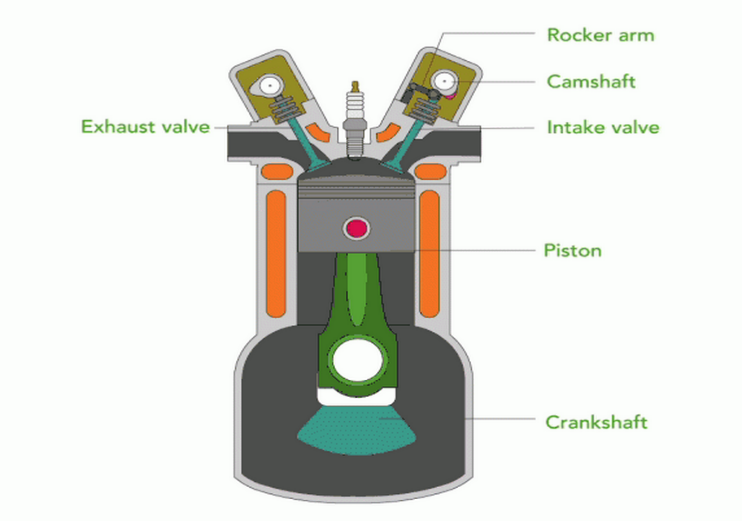
Role of Engine Oil
Engine oil isn’t just a lubricant; it’s the lifeblood of an engine. Without it, the engine’s components would grind against each other, leading to rapid wear and failure.
- Lubrication: Engine oil forms a thin layer between moving parts, preventing direct metal-to-metal contact. This reduces wear and ensures smooth operation.
- Heat Dissipation: As it circulates, engine oil helps to draw heat away from combustion chambers and bearings, assisting in cooling the engine.
- Protection: Engine oil contains additives that help protect engine components against rust and corrosion.
- Cost: The price of engine oil can vary widely based on its quality and brand. A standard quart of oil might cost anywhere from $4 to $10, with full synthetic varieties being more expensive.
- Lifespan: Typically, engine oil should be changed every 3,000 to 7,500 miles, depending on the type of oil and manufacturer recommendations. Modern synthetic oils can last even longer, with some brands suggesting intervals of up to 15,000 miles.
Importance of the Radiator and Coolant
The radiator and coolant form the heart of an engine’s cooling system, managing the heat produced during combustion.
- Radiator:
- Function: The radiator dissipates heat. As hot coolant flows through it, air moving across the radiator (either from vehicle movement or the cooling fan) helps to reduce the coolant’s temperature.
- Material: Typically made of aluminum, which is both lightweight and excellent at dissipating heat.
- Coolant:
- Function: Coolant, often a mix of water and antifreeze, absorbs heat from the engine and transports it to the radiator.
- Price: A gallon of standard coolant can range from $10 to $30, depending on the brand and type.
- Change Interval: Coolant should be replaced every 30,000 to 50,000 miles, though some modern coolants have extended life and can last up to 150,000 miles.
The Thermostat’s Function
The thermostat is a small but vital component in the cooling system, ensuring the engine warms up efficiently and doesn’t overheat.
- Operation: The thermostat blocks coolant flow to the radiator until the engine reaches its optimal operating temperature. Once the engine is warm, the thermostat opens, allowing coolant to circulate and maintain the correct temperature.
- Material: Often made from a mix of metals and includes a wax pellet that melts at a specific temperature to open the valve.
- Cost: A typical thermostat is relatively inexpensive, generally ranging from $10 to $50, depending on the vehicle model.
- Significance: By regulating engine temperature, the thermostat ensures efficient fuel combustion, reduces wear, and limits emissions.
To conclude, the cooling and lubrication systems play indispensable roles in safeguarding engine health and promoting optimal performance. As automotive technology advances, these systems continue to evolve, offering even greater efficiency and protection.
Ignition System
The ignition system of an internal combustion engine is responsible for igniting the air-fuel mixture within the combustion chamber, generating power. A reliable and efficient ignition system ensures that the engine starts promptly, runs smoothly, and produces the maximum amount of power from every drop of fuel.
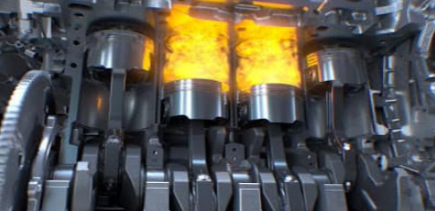
Spark Plugs
A spark plug is a vital component that delivers an electrical spark into the combustion chamber, igniting the air-fuel mixture.
- Material: Typically made of durable materials like iridium or platinum to withstand high temperatures and pressures.
- Lifespan: While older copper spark plugs might last 20,000 miles, modern iridium or platinum plugs can last up to 100,000 miles.
- Cost: Prices vary based on the material and brand. Standard copper plugs might cost as little as $2 each, while high-performance iridium plugs can cost $15 or more apiece.
- Function: The spark plug takes high voltage electricity from the ignition coil and converts it into a spark, igniting the air-fuel mixture.
Distributor, Coil, and Electronic Ignition
Historically, cars used a distributor to direct high-voltage current to the correct spark plug at the right time. Modern vehicles often use electronic ignition systems that are more reliable and efficient.
- Distributor:
- Function: It rotates in sync with the camshaft, distributing the spark to each cylinder in the correct sequence.
- Material: Made of hard plastics and metals to ensure durability.
- Price: Depending on the model, a distributor can range from $50 to $200.
- Coil:
- Role: The ignition coil transforms the vehicle’s low-voltage battery power into the high-voltage needed to produce a spark.
- Efficiency: Modern coils can produce up to 40,000 volts, ensuring a strong spark for efficient combustion.
- Cost: An ignition coil typically costs between $20 and $90, depending on the vehicle and brand.
- Electronic Ignition:
- Advantage: Electronic systems offer precise control, optimizing power, fuel efficiency, and emissions.
- Components: Often includes sensors, control modules, and computers that adjust ignition timing based on engine conditions.
- Price: Replacing an electronic ignition module can range from $50 to $300.
Timing and Firing Order
The timing of the spark and the order in which each cylinder fires are crucial for smooth engine operation.
- Timing:
- Significance: Proper ignition timing ensures the spark plug fires a fraction of a second before the piston reaches the top of its stroke, maximizing power and efficiency.
- Adjustment: In modern engines, the Engine Control Unit (ECU) often automatically adjusts ignition timing based on various sensors.
- Firing Order:
- Role: Dictates the sequence in which each cylinder receives a spark. This sequence balances engine loads, ensuring smooth operation and reducing vibrations.
- Specifications: A typical four-cylinder engine might have a firing order of 1-3-4-2, though this can vary based on engine design.
In conclusion, the ignition system is a symphony of components working in harmony, ensuring that each combustion event occurs at the perfect moment. As technology continues to advance, these systems become even more refined, promising improved performance, reliability, and efficiency.
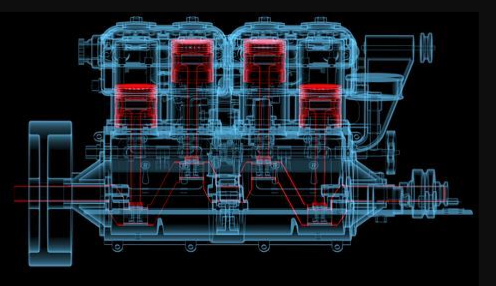
Exhaust System
The exhaust system of a vehicle serves multiple essential functions beyond simply expelling burnt gases. From reducing emissions to optimizing performance and even influencing the sound of the vehicle, the exhaust system plays an intricate role in the overall driving experience. Let’s explore the nuances of this critical system.
Purpose of the Exhaust System
The primary role of the exhaust system is to safely guide combustion byproducts from the engine to the rear of the vehicle. But it’s more than just a series of pipes.
- Toxic Gas Removal: Engines produce several harmful gases like carbon monoxide. The exhaust system directs these gases away from the cabin, ensuring passenger safety.
- Optimal Performance: By helping to maintain the right backpressure in the engine, the exhaust system ensures the engine runs efficiently, delivering optimal power and fuel economy.
- Heat Dissipation: Exhaust systems help dissipate the immense heat generated by the combustion process.
- Cost: Depending on the vehicle type and model, a complete exhaust system replacement can range from $200 to $1,000, with luxury or performance vehicles potentially costing more.
Catalytic Converters and Emission Control
The environment’s safeguard against vehicular pollution, the catalytic converter, plays a pivotal role in reducing harmful emissions.
- Function: Catalytic converters transform harmful emissions like hydrocarbons, carbon monoxide, and nitrogen oxides into less harmful substances like water vapor and carbon dioxide.
- Materials: Made of precious metals like platinum, palladium, and rhodium, which facilitate the conversion of toxic gases.
- Efficiency: Modern catalytic converters can neutralize up to 98% of harmful emissions from gasoline engines.
- Cost: Depending on the vehicle and converter type, replacement costs can range from $100 to $2,000. The high price in some cases is due to the precious metals used in the converter.
Mufflers and Sound Dampening
A vehicle’s roar or purr is significantly influenced by its muffler, a component designed to reduce noise from the exhaust.
- Function: Mufflers use a series of chambers and tubes to reflect and cancel out certain sound waves, reducing the noise emitted from the exhaust.
- Material: Typically made of steel or aluminum, with internal baffles to control sound.
- Quality: The effectiveness of a muffler in sound reduction can vary. Some high-performance vehicles might use mufflers that allow for a louder, more aggressive sound.
- Price: A standard replacement muffler can cost anywhere from $40 to $500, with performance or custom mufflers potentially costing more.
In essence, the exhaust system does more than just vent burnt gases. It’s a sophisticated system designed to protect both the passengers and the environment while contributing to a vehicle’s performance and auditory signature. As emission regulations become stricter globally, the role of the exhaust system will only grow in importance, driving further innovations in this domain.
Advanced Engine Technologies
In the relentless pursuit of efficiency, power, and environmental responsibility, automotive engineers have developed an array of advanced engine technologies. These innovations, some of which have become standard in modern vehicles, propel cars further, faster, and cleaner than ever before. Let’s delve into some of the forefront technologies that are redefining automotive propulsion.
Turbochargers and Superchargers
Both turbochargers and superchargers are forced induction systems, designed to cram more air into the engine cylinders, resulting in increased power output.
- Turbochargers:
- Function: Turbochargers use exhaust gases to spin a turbine, which then drives a compressor to force more air into the combustion chamber.
- Efficiency: By harnessing energy from exhaust gases, turbochargers can boost engine power without significantly increasing fuel consumption.
- Cost: Installing a turbocharger can be pricey, with aftermarket kits ranging from $1,500 to $7,000, depending on the vehicle and the quality of the turbo.
- Lifespan: With proper maintenance, a turbocharger can last between 100,000 to 150,000 miles.
- Superchargers:
- Function: Unlike turbochargers, superchargers are driven by the engine’s crankshaft, typically via a belt.
- Speed: Superchargers can provide an immediate power boost, without the “turbo lag” sometimes associated with turbochargers.
- Price: Aftermarket supercharger kits can range from $2,000 to $8,000.
Variable Valve Timing (VVT)
VVT is a game-changer in engine technology, allowing for more flexible control of the engine’s valves, leading to better performance and efficiency.
- Function: VVT systems adjust the timing of the opening and closing of the valves, optimizing performance across a wide range of engine speeds.
- Advantages: Enhanced fuel efficiency, increased horsepower, and reduced emissions.
- Cost: Most modern engines come with VVT as standard. However, if a VVT component needs replacement, costs can range from $500 to $2,500, including labor.
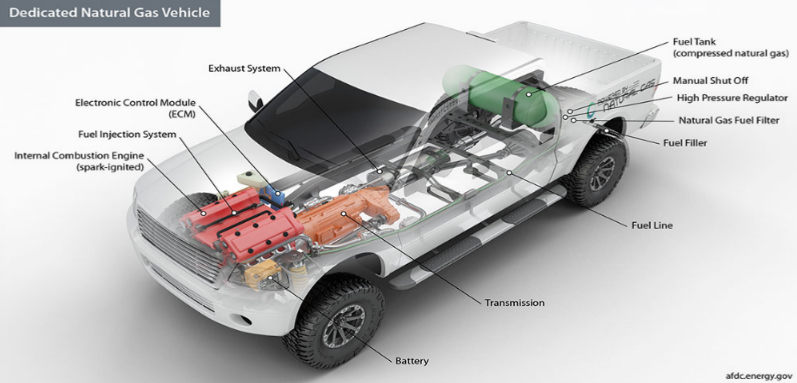
Hybrid and Electric Powertrains
As the automotive world leans towards sustainability, hybrid and electric powertrains are rapidly gaining popularity.
- Hybrid:
- Function: Combines an internal combustion engine with an electric motor, allowing the vehicle to draw power from both sources.
- Efficiency: Hybrids can achieve fuel economy figures exceeding 50 mpg in some models.
- Price: As of 2022, hybrid vehicles typically have a starting price between $20,000 to $40,000, with luxury models being more expensive.
- Electric:
- Operation: Fully electric vehicles (EVs) rely solely on electric motors powered by onboard batteries.
- Emissions: EVs produce zero tailpipe emissions.
- Cost: As battery technology improves, the cost of EVs continues to drop. In 2022, prices for new electric cars ranged from $30,000 to over $100,000 for high-end models.
- Range: Modern EVs can offer ranges exceeding 300 miles on a single charge.
In conclusion, the realm of engine technology is in constant evolution, driven by the demands for more power, greater efficiency, and a reduced environmental footprint. As automotive engineers continue to push the boundaries, the future of driving looks both exhilarating and sustainable.
Maintenance and Common Engine Issues
A car engine is much like the human heart. Just as our heart needs regular check-ups and a good diet, an engine demands routine maintenance and care. By attending to its needs and being aware of common problems, car owners can extend their vehicle’s lifespan, ensure optimal performance, and save on potentially expensive repairs.
Routine Maintenance Tips
Keeping your engine in top condition doesn’t require expert knowledge, but it does demand regular attention to specific aspects.
- Oil Changes: Arguably the most vital routine maintenance task. Fresh engine oil reduces friction and prevents wear. Typically, oil should be changed every 3,000 to 7,500 miles, but always refer to the owner’s manual for specifics.
- Air Filters: A clogged air filter can reduce engine efficiency and increase fuel consumption. Replacing air filters every 12,000 to 15,000 miles can make a noticeable difference.
- Coolant: Regularly check the coolant level. A 50/50 mix of water and antifreeze helps prevent overheating and protects against freezing.
- Belts and Hoses: Inspect these for signs of wear, cracks, or fraying. A snapped belt can lead to a breakdown and potential engine damage.
- Fuel Filter: A dirty fuel filter can lead to poor engine performance. Most manufacturers recommend replacement every 20,000 to 40,000 miles.
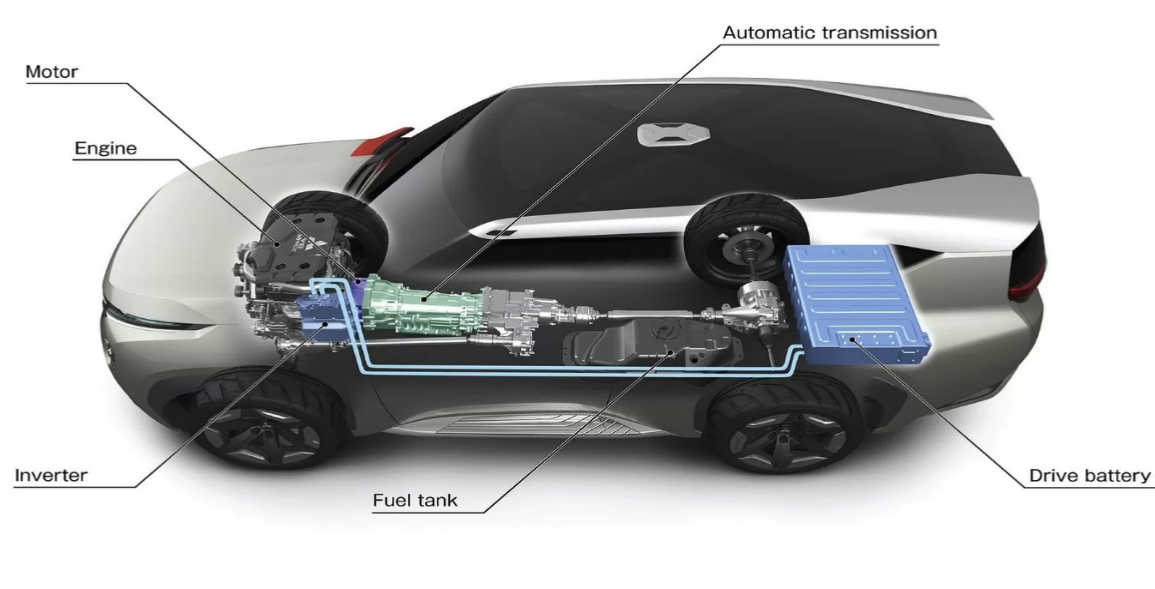
Troubleshooting Common Problems
Engines can occasionally show signs of trouble. Recognizing and addressing these signs early can prevent more severe issues.
- Overheating: If your engine frequently overheats, it could be due to a faulty thermostat, blocked radiator, or inadequate coolant.
- Poor Performance: This might result from clogged fuel lines, dirty air filters, or malfunctioning spark plugs.
- Knocking Sound: Often indicates that the air-fuel mixture in the cylinders is detonating in more than once place at a time. It might be due to using low-octane fuel or a problem with the knock sensor.
- Oil Leaks: Visible spots under your car or a burnt oil smell can indicate a leak, which requires immediate attention to prevent engine damage.
- Excessive Smoke: Blue smoke indicates burning oil, white smoke suggests coolant leakage into the combustion chamber, and black smoke points to a rich air-fuel mixture.
Importance of Regular Check-ups
While DIY maintenance is great, professional check-ups can diagnose hidden issues and ensure that every component works as it should.
- Diagnostic Tools: Modern vehicles come equipped with a plethora of sensors. A professional mechanic can connect specialized diagnostic tools to read these sensors, identifying potential issues before they become significant problems.
- Experience: A trained eye can spot wear and tear signs that most might overlook.
- Value: Regular check-ups maintain the car’s resale value. A well-maintained vehicle can fetch a higher price than one that has been neglected.
- Cost-Efficiency: Addressing small problems through regular check-ups can prevent larger, more expensive issues in the future.
In essence, while engines are robust, they aren’t invincible. Regular maintenance and prompt attention to issues ensure that the heart of your vehicle keeps beating strong, mile after mile.
